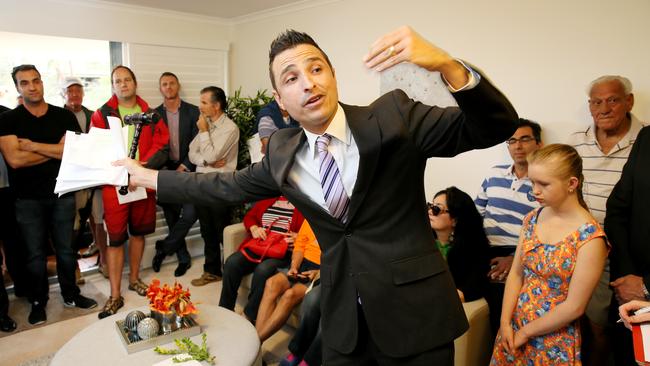Negative gearing barely affects the price of houses in the market

The prospect of ending up with less of it should focus the minds of the Prime Minister and Treasurer as they reportedly contemplate tax increases (in the form of changes to negative gearing and capital gains tax rules) to satisfy the Greens’ price for backing the Help to Buy shared housing equity scheme.
Just what they are contemplating and how serious they are about it are unknown, but the now familiar word games being played in Canberra are an ominous sign.
The Prime Minister says of changing negative gearing rules “I have no plans to do it. It is not our policy”.
But Treasury just happens to be examining options for change that may or may not have been requested by the government.
If you think you’ve heard this humbug before, you are right. It was the formula used early this year to wriggle out of the stage three income tax cuts as structured by the previous government, and in March last year to launch the new tax on superannuation balances above $3m.

A pattern is emerging. The Albanese government takes or creates opportunities to make tax changes it always wanted to make but did not dare include in its small-target election platform.
Ministers deny there are any plans for a change, but plans themselves can always change, sometimes suddenly.
Leaving aside the grubby politics, negative gearing and capital gains tax rules need to be considered on their merits as tax policy and as housing policy. They are first and foremost tax policies, as they apply across the board to all investments, not just housing.

From a tax policy perspective, negative gearing follows the principle that the costs of generating income are a legitimate deduction.
As such, it has always been part of federal income tax, except for a two-year interlude in the 1980s. The same principle applies to other investments without the objections we see in the area of housing.
Negative gearing means the investor has borrowed so much to buy a property on which the mortgage interest expense is large enough, along with other running costs such as rates, to generate an annual loss.
This can then be deducted from any other taxable income, including wage income, at the taxpayer’s marginal rate. In 2020-21, about half of all individual property investors were in this situation; with higher interest rates, it is probably a larger proportion now.

Negative gearing is a leveraged investment and as such is risky, not a one-way bet. A before-tax loss is still a loss after tax – just a smaller one. It is a losing strategy unless capital gains are sufficient to offset the operating losses over time.
While negative gearing and the 50 per cent capital gains tax discount are often mentioned in the same breath, the justification for the CGT discount (on housing as well as other assets) stands on its own. The case for negative gearing deductions is not weakened by the CGT discount, and vice versa.
However, there is a reasonable argument that negative gearing losses should not be a deduction from other regular income such as wages, but from capital gains.
If the taxpayer does not have enough gains to absorb losses in a given year, they can carry the excess losses forward to deduct them from future gains.
The real objection to negative gearing often seems to be that it is allegedly directing a tax “concession” disproportionately to better-off taxpayers. In 2020-21, more than half the tax benefit went to the top 20 per cent. However, those taxpayers pay a disproportionately large share of tax in the first place.
From a housing policy perspective, there is a view that housing affordability for owner-occupiers can be improved by discouraging investors through tax measures.

While removing or reducing negative gearing and/or CGT concessions would reduce investor demand for housing, this overlooks the supply effects. The withdrawal of some investors from the market would lead to less housing being supplied, muting the fall in prices. Owner-occupier demand would not neatly fill the void left by departing investors, as the types of housing favoured by investors and owner-occupiers are not perfectly interchangeable.
While tilting the composition of the existing housing stock from rental to owner-occupied might make some people feel better, because home ownership is highly valued, it would also exacerbate tightness in the rental market.

There are several studies of the impact of negative gearing (and the CGT discount) on dwelling prices and they all find it is very small – in the order of 1-4 per cent; not per year, but in total over many years. Conversely, any price relief from curbing negative gearing would be small.
So if stopping negative gearing is bad tax policy and even worse housing policy, why even contemplate doing it?
One explanation is that the government will cave in to the Greens out of desperation to get Help to Buy up and running. Another is that it is secretly happy to be pushed into doing something it wanted to do anyway – slash tax breaks – and blame the Greens.
It is probably a bit of both.
Robert Carling is a Senior Fellow at the Centre for Independent Studies and a former IMF, World Bank, and federal and state Treasury economist.





As a rule, if you tax something more you will end up with less of it. This is a well-worn epithet of tax policy debate, but generally true. In today’s context, the “something” is housing – and specifically housing held by investors.